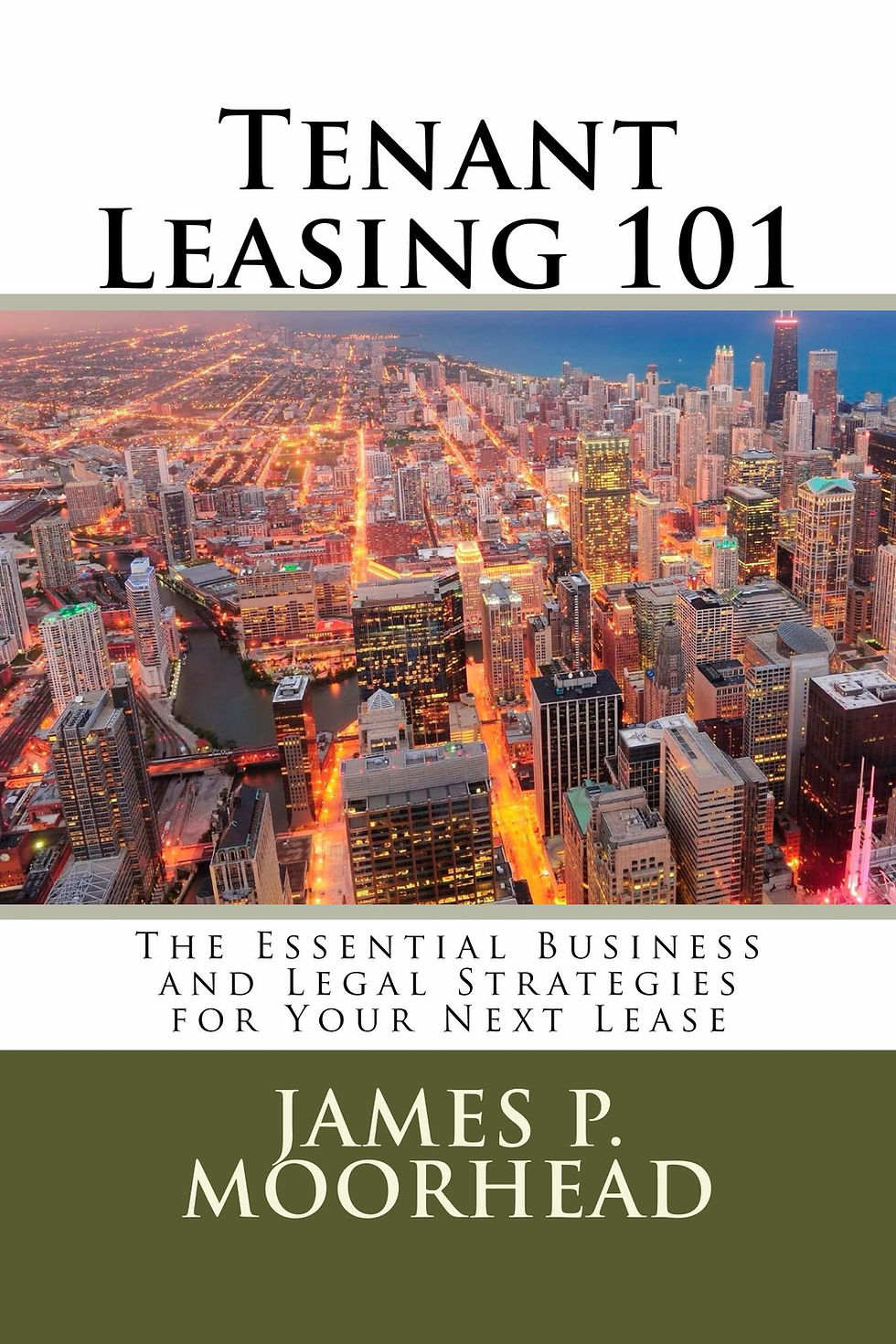Leasing 101, Part 9: Term Length and Alternatives
- jmoorhead
- Oct 21, 2014
- 3 min read
The length of the lease term is a business decision that needs to be negotiated with the landlord, reviewed with the broker, and analyzed internally. It should be a length that makes sense with respect to the tenant’s business and growth plan. It also should be a length for which the landlord will provide attractive economic and financial incentives. Finally, it should reflect current and anticipated economic realities for tenant by both mitigating risk and allowing for opportunity as they may arise during the lease term.
Preparing a long-term business plan can sometimes be an exercise in futility. A company may have a good grasp of its operations and plans for the next 3 months, or even 12 months. However, to accurately predict growth, opportunities, and challenges in two, five, or ten years can be virtually impossible. A business may find that one aspect of its business thrives while another does not. Future global financial crises, technology advancements, weather and natural phenomenon, and government regulation all may impact a business in ways that cannot be predicted now.
The challenge for a prospective tenant is trying to use these plans and predictions when signing a lease with a multi-year term, often five or ten years. Even though the business may experience dramatic change during the lease term, the rental and operational requirements will not similarly change or lessen during the term.
If a business cannot realistically and accurately predict where, how, or what it will be in one, five, or ten years, then a tenant should consider including provisions in its lease that will allow it to mitigate risk and seize on opportunities.
When deciding how long a lease term should be, a tenant will need to consider several factors, including the following:
Alignment with Tenant’s Business Plan
A tenant should think through the parts of its business plan that it can control. Are the company executives intending to sell the company in the next few years? Are the owners planning to retire soon? Does the company need to follow a store opening growth plan to maintain a national presence, irrespective of whether individual stores operate at a loss? Is this a new business venture, which the owners are happy to wind down if not immediately profitable?
The term length should reflect the tenant’s growth plan and tolerance for risk. A financial stable and growing business may be able to sign a ten year lease without a second thought. A family owned business, in which the patriarch is 75 and the family succession is unclear, may not need or want a lease with a ten year term and two renewal options.
Landlord Economic and Financial Incentives
A landlord may offer a few economic and financial incentives to attract a new tenant. Competitive base rent, additional rent caps and base years, and tenant improvement allowances could be included in the landlord’s incentive package. The general rule of thumb is the longer the lease term, the better the incentive package. An experienced broker can help negotiate the incentive package for the prospective tenant.
Mitigating Risk
Term Length: Some tenants currently are being very cautious about the length of new lease terms. In a strong economy, a tenant might not give much thought to signing a ten-year lease. However, some tenants who are concerned about the viability of their business or their success in a new market now may desire a shorter initial term with more renewal terms. In prior years, a lease could have a ten-year initial term and 2 five-year renewals. In today’s market, that same deal might now have an initial three-year term and 5 three-year renewals. In this scenario, the tenant could get out of the lease deal if the business does not support the space but, at the same time, has reserved rights to the space if the business does well.
Early Termination Right: If business is slow, contracting the space or exercising an early termination right (both are often with a fee paid to landlord) might be a cost-effective way to reduce the lease obligation.
Seizing Opportunity
If business is better than expected, a right to expand into adjoining space is very useful for those who initially conservatively leased a smaller space due to the uncertainty of the business. A right of first refusal or a right of first offer are two provisions that an experienced lawyer or broker can negotiate into the lease to allow the tenant to expand if the business growth is better than expected.
By thinking through the lease term and aligning it with a realistic business and growth plan, the tenant can better help its business handle the unforeseen that inevitably arises during the lease term.






















